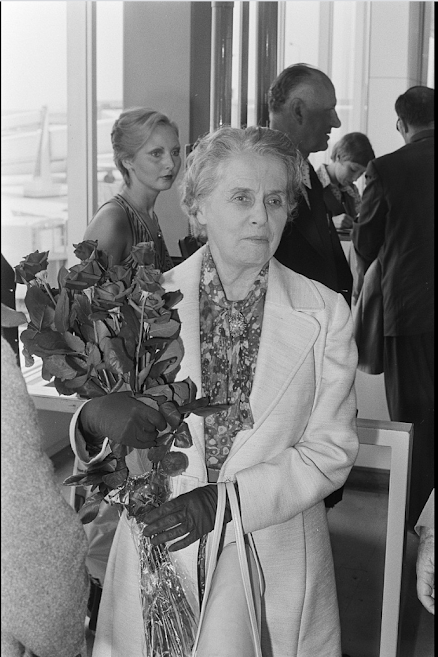An Irish Ballerina's Journey Ninette De Valois Part 3
The Academy of Choreographic Art, which was an all girl’s dance school Ninette De Valois established when she saw Britain didn't have the same dance culture that Paris had and she decided to change that by establishing a dance school herself.
The writer W.B. Yeats, who was a poet and the co-founder of the Abbey Theater, made the suggestion that Valois should also establish a school in her native Ireland.
Ninette de Valois, while in Dublin, took Yeats's words to heart and established a Dance School called Abbey School of Ballet in Dublin. She managed the programming for the school. Two students from the school would one day fund another ballet school project in Ireland called, The Abbey School of Ballet.
Ninette de Valois wanted to eventually form a repertory ballet company, where students of The Academy of Choreographic Art School and The Abbey School of Ballet in Dublin, would be chosen from the schools to be trained in British style of dance.
Ninette De Valois choreographed many of the ballets for the schools. All the students of the schools were supplied with professional stage experience and performed in plays and operas at The Old Vic Theater.
In 1928, the owner of The Old Vic Theater, Lily Baylis, wanted to create a theater branch. She bought Sadlers Well Theater and hired de Valois to present full stage dance productions at both The Old Vic Theater and Sadlers Well Theater.
Ninette de Valois was establishing herself as a master choreographer and was producing many ballet productions yearly, to her unique choreography. She commissioned Irish contemporary composers to create the music for her ballets, such as Irish Composers, Harold R. White, Arthur Duff and John F. Larchet. When de Valois established her ballet company, she was the main dancer and choreographer and there were a total of six dancers at that time. When the company had their first full ballet production, at The Old Vic Theater, in 1931, with Anton Dolin, as their guest dancer.
When the first stage performance happened at the Sadler’ Well Theater, the performance had such wonderful reviews that the company hired more dancers. Ninette de Valois retired from the stage in 1933, when her pupil, Alica Markova, joined her company. Exiting as a performer and reentering as the company's dedicated choreographer, Ninette de Valois, raised her dancers to new heights. The company was the first western company ever to do ballets that only the Imperial Russian Ballet had done and made famous. This brought her dancers fame in the 1930’s and the company's Alicia Markova became the company’s Prima Ballerina.
In 1931 De Valois took the school, The Academy of Choreographic Art School into the studios of Sadler’s Well Theater and the school was then renamed, Sadler's Ballet School. During the name change a new ballet company was formed at Sadler’s Well Theater called, Vic-Wells Ballet Company. This company would later become, The Royal Ballet, Birmingham Royal Ballet and Royal Ballet School. Ninette de Valois was instrumental for establishing the British and Irish Ballet.
Ninette De Valois wanted the world to know what ballet was like in Britain, so she brought on British principal choreographer Frederick Ashton and Music director Constant Lambert, in 1935.
The most famous ballets de Valois choreographed were, Job in 1931, The Rake’s Progress, in 1935 and Checkmate in 1937.
Ninette de Valois’ ballet company had pupils who would become global stars on the stage, such as Robert Helpmann, Moira Shearer, Beryl Grey and Michael Simes. In 1949, during the company’s world tour in the United States, they had great success, when one of their ballerina’s named Margot Fonteyn, became a world star dancer.
In 1956 Ninette de Valois’ school and company was given a royal charter by Queen Elizabeth II and was formally linked, being renamed, The Royal Ballet. De Valois having the support of the Queen, made sure her company always had sensational dancers at all times. Later on, the company would have star dancers such as Svetlana Beriosova, Antoinette Sibley, Nadia Nerina, Lynn Seymour and Rudolf Nureyev. Guest Choreographers were also brought on to work with the company to aid in choreography such as George Balanchine and Sir Kenneth Macmillian.
In 1963 Ninette de Valois retired as director of The Royal Ballet but her presence was still largely felt there as it was at the school from which she retired in 1970. Even though she was retired, De Valois stayed involved with ballet; she became patron and supporter for a number of ballet projects, such as The Cork Ballet Company and The Irish National Ballet Company in Ireland. Ninette De Valois granted her childhood wish herself and established British Ballet. She gave so much back to the ballet community in her 102 years.




Comments
Post a Comment